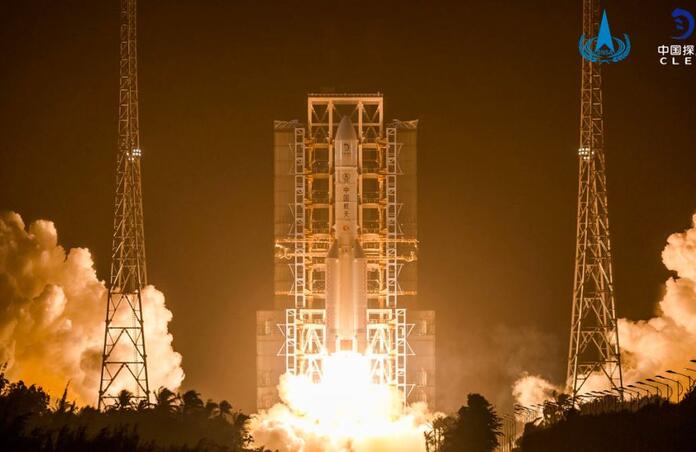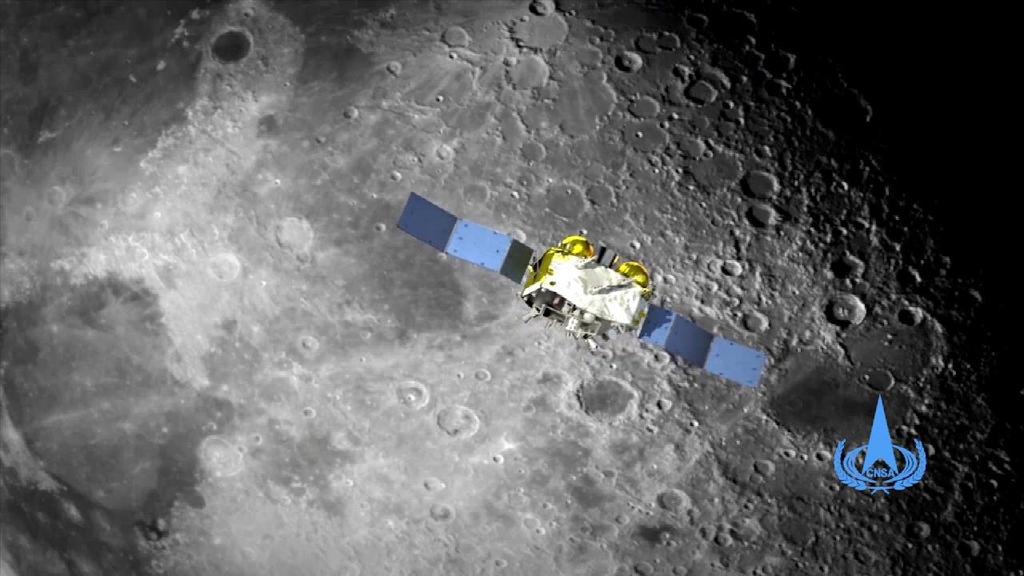Chang’e 5 reaches for the Moon

At 8.30pm British time on Monday the 23rd of November, the China National Space Administration (CNSA) successfully launched its Chang’e 5 lunar mission. One week after, the probe is in orbit around the Moon, and CNSA announced a touch-down attempt in the next 48 to 72 hours.
This is China’s first return mission to the Moon, which before had only been achieved by the US and the USSR and hasn’t been done since 1976 with the latter country’s Luna 24 robotic probe mission. The European Space Agency supports the mission by providing tracking of the probe in the Kourou facility in French Guiana, in return CNSA announced that researchers from institutions around the world will be allowed to access the samples. CNSA already made the headlines in January 2019, when they successfully landed a rover on the far side of the Moon with Chang'e 4.
As you will have guessed, if there is Chang'e 4 and Chang'e 5, there are predecessors: the first step of the Chang'e program was to reach the lunar orbit (Chang'e 1 and 2, 2007 and 2010). Then two rovers were sent with Chang'e 3 in 2013 and 4. However, returning rocks is yet another technical challenge, notably since it requires a robotic arm on the lander as well as an "ascent vehicle" that lifts the samples from the surface to transfer them to the return vehicle.

You might wonder what another mission to the Moon might bring – we’ve been there 50 years ago, so why does this CNSA mission take place and why is NASA planning the Artemis program to send astronauts back there by 2024? On one hand, there is the longer-term objective of sending humans to Mars; for such a mission that will take about 2 years, it is essential that “practise” manned missions are conducted. Another reason to explore the Moon further, which is something that interests astrophysicists from a more theoretical point of view, is that there are still many mysteries about our natural satellite, to name a few: how it formed, how old it precisely is, its volcanic and tectonic activity – all questions which might be answered, or at least progress be made on, with more rock samples and experiments.
There are other experiments on board of the lander, such as Analytical Instruments to study the composition of the soil and a Ground-Penetrating Radar that "scans" the subsurface. The capsule with the samples will return around mid-December. Other CNSA goals include the establishment of a space station by 2022 and also the sending of a manned mission to the Moon. But already by bringing back to Earth the planned 2 kg of samples, the CNSA would establish itself as the most advanced agency in terms of that particular technology, and it will be exciting to see what other developments they will lean towards - further research, mineral commercial mining, or maybe space tourism like SpaceX ?
Image credits: CNSA
